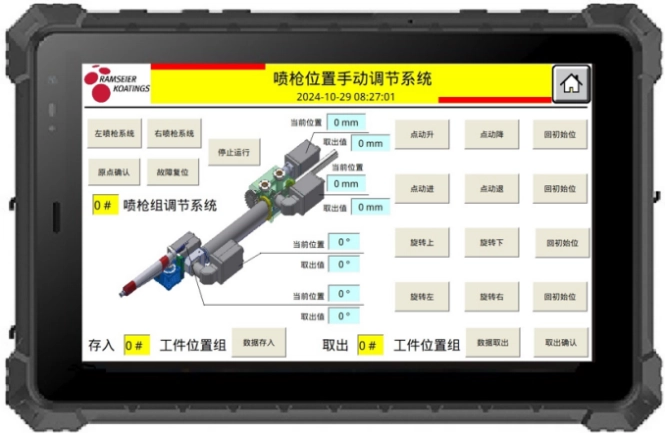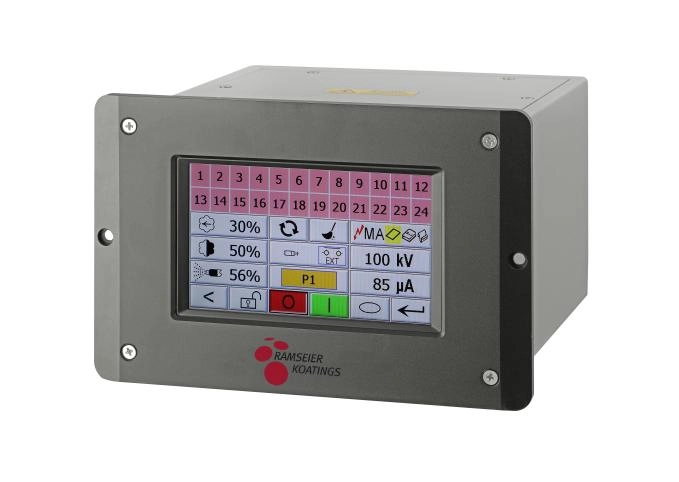Content Menu
● Introduction
● Understanding the Core Concepts
>> What is an Automated System?
>> What is an Integrated Control System?
● How Automated Systems Deliver Quality Control
>> Key Components and Operation
>> Benefits of Automated Quality Control
>> Limitations of Automated Systems
● Integrated Control Systems: Elevating Quality Control
>> The Power of Integration
>> Advantages Over Standalone Automated Systems
>> Challenges of Integrated Control Systems
● Direct Comparison: ICS vs. Automated Systems
● Which Provides Better Quality Control?
>> Automated Systems: Precision and Speed
>> Integrated Control Systems: Comprehensive Oversight
>> The Verdict
● Real-World Applications
>> Automotive Industry
>> Electronics Manufacturing
>> Food and Beverage
● Future Trends in Quality Control
● Frequently Asked Questions
Introduction
In the modern manufacturing landscape, maintaining high product quality is not just a competitive advantage—it is a necessity. As industries evolve, so do the systems that underpin their operations. Two major technological approaches dominate the conversation: Integrated Control Systems (ICS) and Automated Systems (AS). Both aim to enhance quality control, but they differ significantly in structure, capability, and impact. This article explores how each system functions, compares their effectiveness in quality control, and provides insights to help manufacturers choose the right approach for their needs.

Understanding the Core Concepts
What is an Automated System?
Automated systems are designed to perform specific tasks or processes with minimal human intervention. These systems utilize machines, sensors, and control logic to execute repetitive or complex operations, often replacing manual labor. In the context of quality control, automated systems use technologies such as cameras, sensors, and artificial intelligence to inspect products, identify defects, and ensure that manufacturing standards are consistently met.
Automated quality control (AQC) systems can operate around the clock, applying the same standards to every product, and providing real-time feedback to the production line. This leads to faster inspections, higher consistency, and significant reductions in human error.
What is an Integrated Control System?
An Integrated Control System (ICS) goes beyond automation by connecting and coordinating multiple automated processes and systems within a manufacturing environment. ICS ensures that various machines, sensors, and software platforms work together as a unified whole. This integration allows for seamless data sharing, centralized monitoring, and coordinated responses to quality issues.
ICS can encompass everything from production scheduling and inventory management to real-time quality monitoring and predictive maintenance. By integrating disparate systems, ICS provides a holistic view of the manufacturing process, enabling more informed decision-making and proactive quality management.
How Automated Systems Deliver Quality Control
Key Components and Operation
Automated quality control systems typically include:
- Sensors and Cameras: Detect physical or visual defects in products.
- Controllers: Microprocessors or computers that process sensor data and make decisions.
- Actuators: Mechanisms that remove defective items or adjust the production process.
- Software: Algorithms, often powered by AI, that analyze data and trigger corrective actions.
These systems inspect products rapidly and objectively, flagging or removing defective items in real-time. The result is a streamlined process that minimizes the risk of defective products reaching customers.
Benefits of Automated Quality Control
- Speed: Inspections are performed much faster than manual methods.
- Consistency: Automated systems apply uniform standards, eliminating subjectivity.
- Scalability: Easily handles large production volumes without additional labor.
- Data Generation: Produces valuable data for process improvement and predictive maintenance.
- Cost Savings: Reduces labor costs and minimizes waste from defective products.
Limitations of Automated Systems
- High Initial Investment: Equipment and integration costs can be substantial.
- Technical Expertise Required: Implementation and maintenance demand specialized knowledge.
- Limited Flexibility: May struggle with highly variable or custom products.
- Integration Challenges: Difficulties may arise when connecting to legacy systems.
Integrated Control Systems: Elevating Quality Control
The Power of Integration
Integrated Control Systems unify various automated processes, creating a network where information flows seamlessly between machines, sensors, and software platforms. This integration enables:
- Centralized Monitoring: Quality data from all stages of production is accessible in real-time.
- Coordinated Response: Automated actions can be synchronized across different systems to address quality issues holistically.
- Predictive Analytics: Data from multiple sources can be analyzed to predict and prevent quality problems before they occur.
- Continuous Improvement: Integrated feedback loops allow for ongoing optimization of processes and quality standards.
Advantages Over Standalone Automated Systems
- Holistic Quality Management: ICS provides a comprehensive view of the entire production process, not just isolated tasks.
- Enhanced Traceability: Every product can be tracked from raw material to finished good, ensuring accountability.
- Greater Flexibility: Easier to adapt to new products, processes, or regulatory requirements.
- Improved Decision-Making: Access to integrated data supports more informed and faster decisions.
Challenges of Integrated Control Systems
- Complex Implementation: Requires significant planning and coordination to connect disparate systems.
- Cost and Resource Intensive: Higher upfront investment and ongoing maintenance needs.
- Change Management: Employees must adapt to new workflows and technologies.
Direct Comparison: ICS vs. Automated Systems
| Feature/Aspect | Automated Systems | Integrated Control Systems |
| Scope | Task-specific | Enterprise-wide |
| Quality Control Focus | Individual processes | End-to-end processes |
| Data Utilization | Localized, process-specific | Centralized, cross-functional |
| Speed of Implementation | Faster, modular | Slower, more complex |
| Flexibility | Limited | High |
| Scalability | High (within scope) | Very high (across enterprise) |
| Cost | Lower initial, lower total | Higher initial, higher total |
| Human Intervention | Minimal | Minimal, with centralized oversight |
| Predictive Capabilities | Limited | Advanced (with analytics) |
| Traceability | Basic | Comprehensive |
Which Provides Better Quality Control?
Automated Systems: Precision and Speed
Automated systems excel in environments where speed, consistency, and precision are paramount. They are ideal for high-volume, repetitive manufacturing tasks where the quality criteria are well-defined and stable. Automated inspection systems can detect defects invisible to the human eye and operate continuously without fatigue, ensuring that every product meets the required standards.
However, the scope of automated systems is typically limited to specific tasks or production lines. While they significantly reduce human error and increase throughput, they may not provide the holistic oversight needed for complex manufacturing environments.
Integrated Control Systems: Comprehensive Oversight
Integrated Control Systems offer a broader approach to quality control by connecting all aspects of the manufacturing process. This enables real-time monitoring, rapid response to quality issues, and data-driven continuous improvement. ICS is particularly beneficial in industries where traceability, regulatory compliance, and adaptability are critical.
The comprehensive nature of ICS allows organizations to identify root causes of quality issues, implement corrective actions across multiple processes, and prevent defects before they occur. While the initial investment and complexity are higher, the long-term benefits in quality, efficiency, and flexibility are substantial.
The Verdict
- For organizations with straightforward, high-volume production needs, automated systems deliver excellent quality control with minimal investment and complexity.
- For manufacturers operating in dynamic, highly regulated, or complex environments, integrated control systems provide superior quality control through holistic oversight, predictive analytics, and continuous improvement.
Ultimately, the best approach depends on the specific needs, scale, and complexity of the manufacturing operation. Many organizations find that a hybrid approach—starting with automation and gradually integrating systems—offers the optimal balance of cost, scalability, and quality.
Real-World Applications
Automotive Industry
Automated systems are widely used for inspecting components such as welds, paint finishes, and assembly accuracy. Integrated control systems, meanwhile, manage the entire production line, ensuring that every part meets quality standards and that data is available for traceability and recalls if necessary.
Electronics Manufacturing
High-speed automated inspection systems check for defects in circuit boards and components. Integrated control systems link these inspections with supply chain management, inventory, and customer feedback, enabling rapid response to quality issues.
Food and Beverage
Automated systems inspect packaging and labeling, while integrated control systems monitor everything from ingredient sourcing to final product distribution, ensuring compliance with safety regulations and quality standards.
Future Trends in Quality Control
- Artificial Intelligence: Both automated and integrated systems are increasingly leveraging AI for defect detection, predictive maintenance, and process optimization.
- Internet of Things (IoT): IoT devices are enabling more granular data collection and real-time monitoring across the production process.
- Cloud Computing: Cloud-based ICS platforms offer scalable, flexible solutions for global operations.
- Collaborative Robots (Cobots): These can work alongside humans, combining the adaptability of manual inspection with the precision of automation.
Frequently Asked Questions
1. What is the main difference between an automated system and an integrated control system?
An automated system performs specific tasks independently, while an integrated control system connects and coordinates multiple automated processes across the entire production environment.
2. Can automated systems be upgraded to integrated control systems?
Yes, many organizations start with standalone automation and gradually integrate these systems to create a unified control environment.
3. Which system is more cost-effective in the long run?
While automated systems have lower initial costs, integrated control systems often deliver greater long-term value through improved quality, efficiency, and adaptability.
4. Are integrated control systems suitable for small manufacturers?
ICS can benefit small manufacturers, especially those with complex processes or regulatory requirements. However, the investment must be justified by the scale and complexity of operations.
5. What are the biggest challenges in implementing integrated control systems?
The main challenges include high initial investment, technical complexity, and the need for organizational change management.

[1] https://www.i4verse.com/article/automation-and-integration-distinct-yet-interconnected
[2] https://www.azo-inc.com/blog/difference-between-automation-and-controls
[3] https://standardbots.com/blog/automated-quality-control
[4] https://www.conger.com/types-of-automation/
[5] https://averroes.ai/blog/automated-quality-control-vs-manual-inspection
[6] https://www.ee.cityu.edu.hk/~gchen/pdf/Writing.pdf
[7] https://www.creaform3d.com/en/resources/blog/automated-quality-control-systems
[8] https://patents.google.com/patent/CN101065746A/zh
[9] https://baike.baidu.com/item/%E8%87%AA%E5%8A%A8%E5%8C%96%E4%B8%93%E4%B8%9A%E8%8B%B1%E8%AF%AD/1467615
Hot Tags: China, Global, OEM, private label, manufacturers, factory, suppliers, manufacturing company










































 .
. 